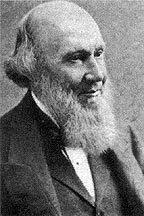Planning worship?
Check out our sister site, ZeteoSearch.org,
for 20+ additional resources related to your search.
- |
User Links
Search Results
Praise to Jesus, Lord and God
Author: W. Ball Appears in 9 hymnals Used With Tune: [Praise to Jesus, Lord and God]
Praise to Jesus, Lord and God
Praise to Jesus, Lord and God
Author: W. Ball Hymnal: Songs of Faith, Hope, and Love #96 (1883) Languages: English Tune Title: [Praise to Jesus, Lord and God]
Praise to Jesus, Lord and God
Praise to Jesus, Lord and God
Hymnal: Hymnal with Music for Children #44 (1888) Languages: English Tune Title: STAFFORD
Praise to Jesus, Lord and God
Praise to Jesus, Lord and God
Hymnal: Hymnal with Music for Children #44 (1887) Languages: English Tune Title: STAFFORD
Praise to Jesus, Lord and God
E. J. Hopkins

1818 - 1901 Composer of "[Praise to Jesus, Lord and God]" in Songs of Faith, Hope, and Love Dr Edward John Hopkins MusDoc United Kingdom 1818-1901. Born at Westminster, England, the son of a clarinetist with the Royal Opera House orchestra, he became an organist (as did two of his brothers) and a composer. In 1826 he became a chorister of the Chapel Royal and sang at the coronation of King William IV in Westminster Abbey. He also sang in the choir of St. Paul’s Cathedral, a double schedule requiring skill and dexterity. On Sunday evenings he would play the outgoing voluntary at St. Martin’s in-the-field. He left Chapel Royal in 1834 and started studying organ construction at two organ factories. He took an appointment at Mitcham Church as organist at age 16, winning an audition against other organists. Four years later he became organist at the Church of St. Peter, Islington. In 1841 he became organist at St. Luke’s, Berwick St., Soho. Two Years later he was organist at Temple Church, which had a historic organ (built in 1683). He held this position for 55 years. In 1845 he married Sarah Lovett, and they had four sons and five daughters. He was closely associated with the Bach Society and was organist for the first English performances of Bach’s St. Matthew Passion. In 1855 he collaborated with Edward Rimbault publishing “The organ, its history and construction” (3 editions 1855-70-77). In 1864 he was one of the founders of the “College of organists”. In 1882 he received an honorary Doctorate of Music from the Archbishop of Canterbury. He composed 30+ hymn tunes and some psalm chants, used by the Church of England. He died in London, England.
John Perry
E. J. Hopkins
William Ball
1801 - 1878 Person Name: W. Ball Author of "Praise to Jesus, Lord and God" in Songs of Faith, Hope, and Love Ball, William, a member of the Society of Friends, some time resident at Glen Rothsay, Rydal, Westmoreland, author of (1) Nugae Sacrae, or Psalms, Hymns, and Spiritual Songs, Lond., 1825. (2) The Transcript and Other Poems; (3) Hymns, or Lyrics, 1864; (4) Verses composed since 1870, &c, 1875; and other works. From the above the following hymns have come into common use:—
1. Praise to Jesus! Praise to God. Praise. This is given in the Hymnary, 1871, as "Praise to Jesus, Lord and God," and in the American Hymns and Songs of Praise, N. Y., 1874, as:—"Hallelujah! Praise to God." Original text in Lyra. Britannica, 1867, p. 645.
2. There is a pure and tranquil wave . Hope. From Nugae Sacrae, 1825, into Lord Selborne's Book of Praise, 1862; the Lyra Britannica, 1867, p. 646: and the Westminster Abbey Hymn Book, 1883, &c.
-- John Julian, Dictionary of Hymnology (1907)
William Ball


 My Starred Hymns
My Starred Hymns

